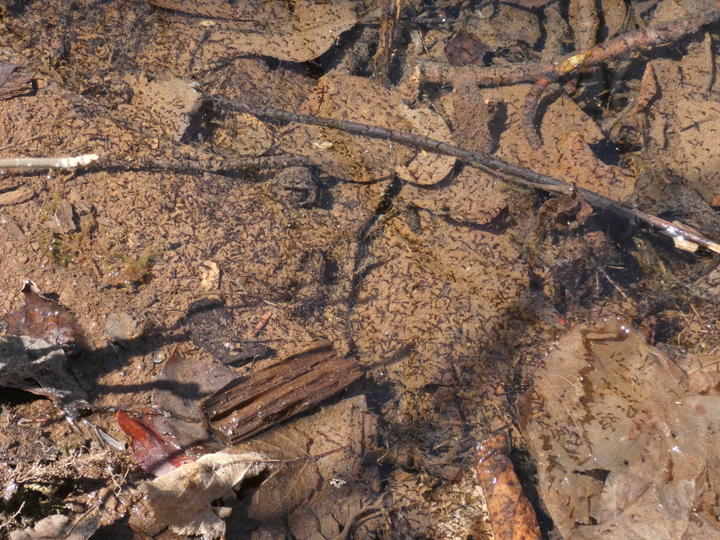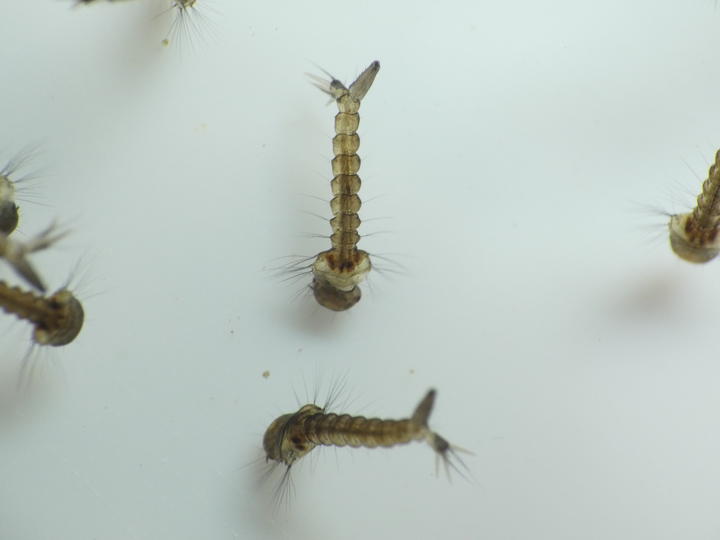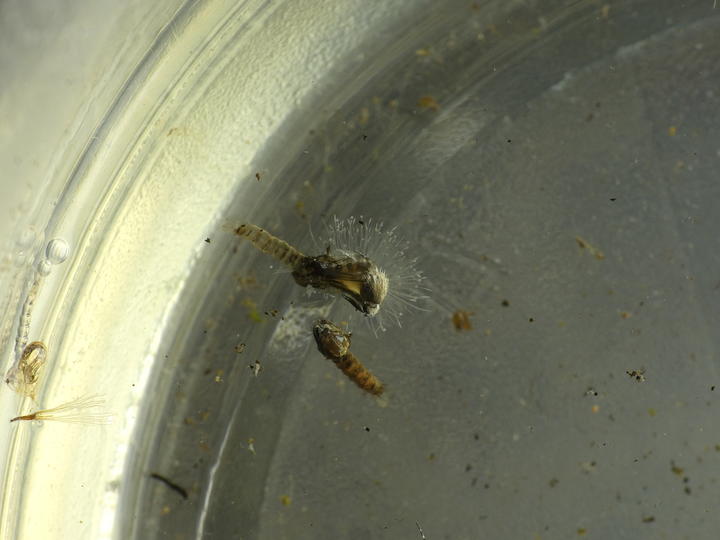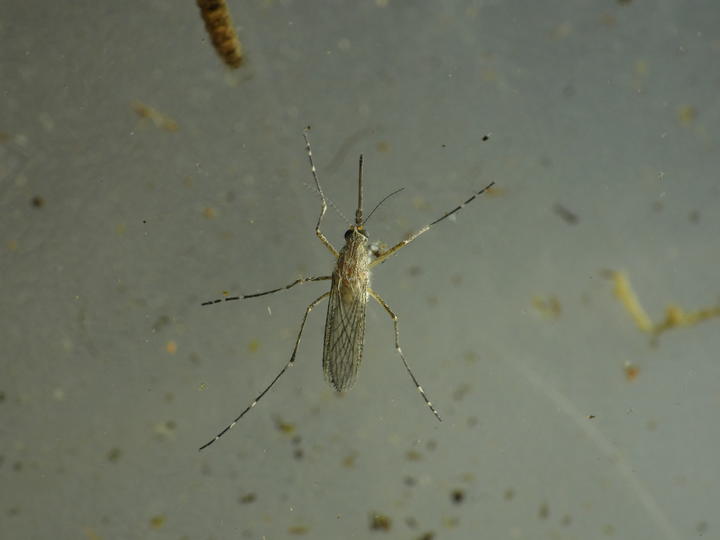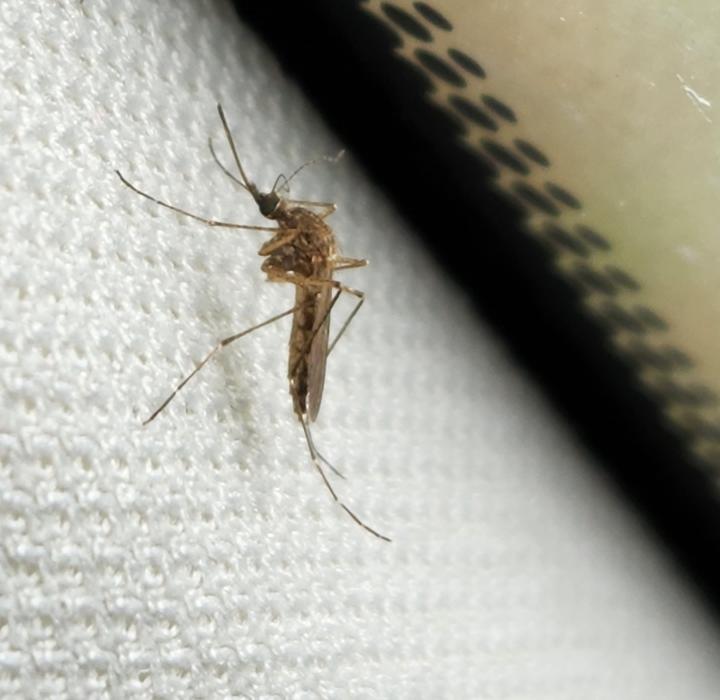More names for this insect
Anishinaabemowin: Zagime (mosquito)
Dakota: Çapoŋka (mosquito)
The Dakota and Anishinaabe were among the earliest people to name Minnesota’s plants and animals, as well as to understand them in relation to Minnesota’s climate and seasons. Those original names are still in use, and several are included on the Season Watch website. While other kinds of mosquitoes are native to Minnesota, the genus Aedes was introduced, probably in the 1980s.
Latin (or scientific name): Aedes (Aedes is the name of a genus with many species.)
The scientific community has a convention of assigning agreed-upon Latin names to every kind of organism. Using scientific names helps people communicate confidently about the same organism and organize lifeforms based on how closely related they are.
Page contents
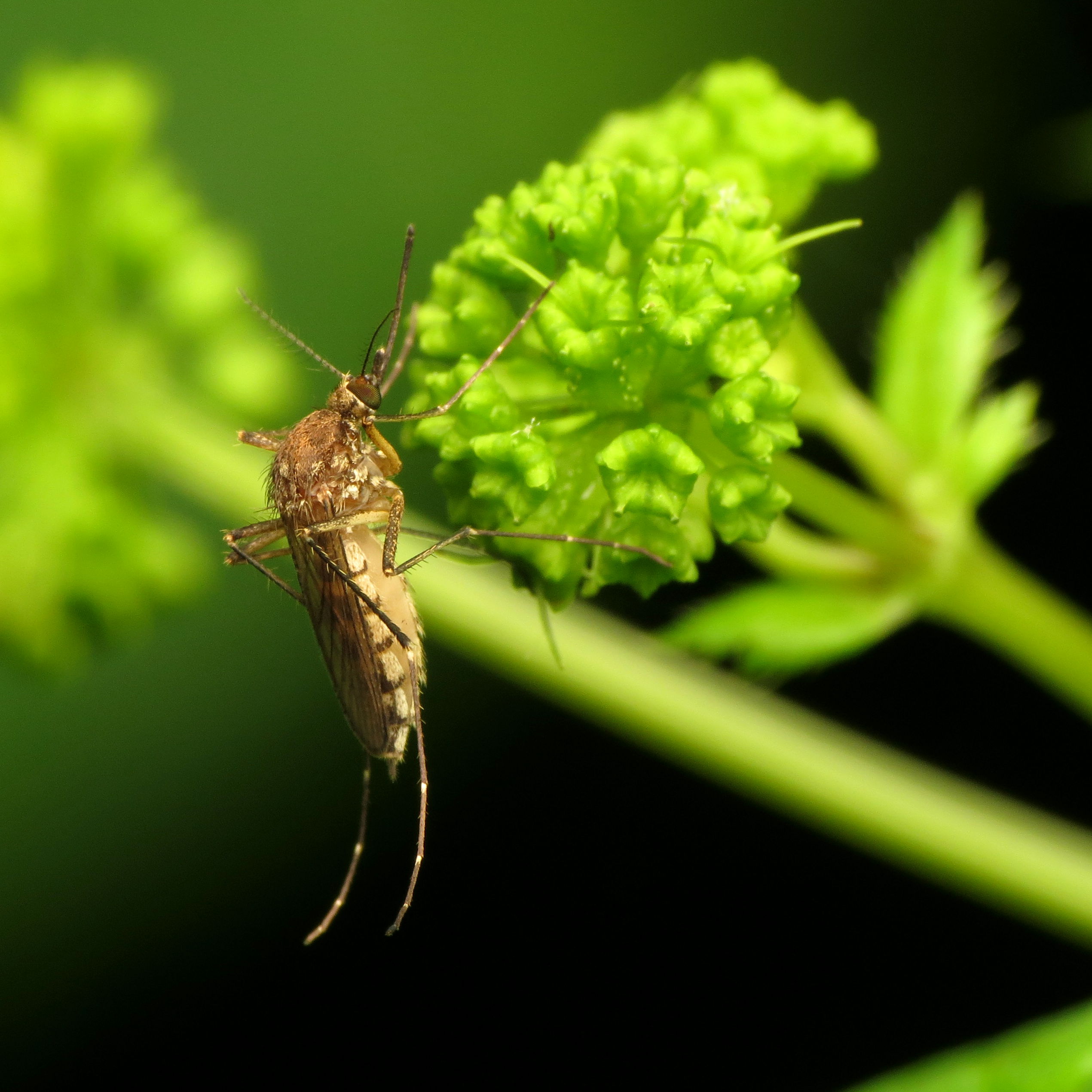
May 4, 2019, Washington, DC
Photo by Katja Schulz via Wikimedia Commons (CC BY 2.0)
About mosquitoes
- In Minnesota there are fifty-one species of mosquitoes. Many of those belong to the genus Aedes, which was introduced to the United States in the 1980s.
- Adult mosquitoes are active throughout summer and into early fall.
- Many species of mosquito go through several generations each summer.
- Male mosquitoes feed on flower nectar. Females feed on the blood of humans and other animals.
- It takes about ten days for mosquito larvae to reach adulthood.
- Fun fact: Some mosquito species prefer the blood of humans, but other species prefer the blood of non-human animals.
Visual guide to phenology
Watch for mosquitoes' presence (or absence) and abundance at different times of year.
Note to observers
This page explains general clues to watch and listen for when observing mosquito phenology. However, this page does not explain how to identify this insect or collect data in a standardized way.
- Consult a field guide for help with identification.
- For guidance on collecting data, see Nature’s Notebook.
Graphs and historical data
Note: The Orientation Center provides a map, as well as information on reading graphs; interpreting summary statistics, who collected the data and how; and how to download datasets for independent exploration.
First seen
- Earliest: March 17 (occurred in 2012)
- Average: April 22
- Latest: May 26 (occurred in 2002)
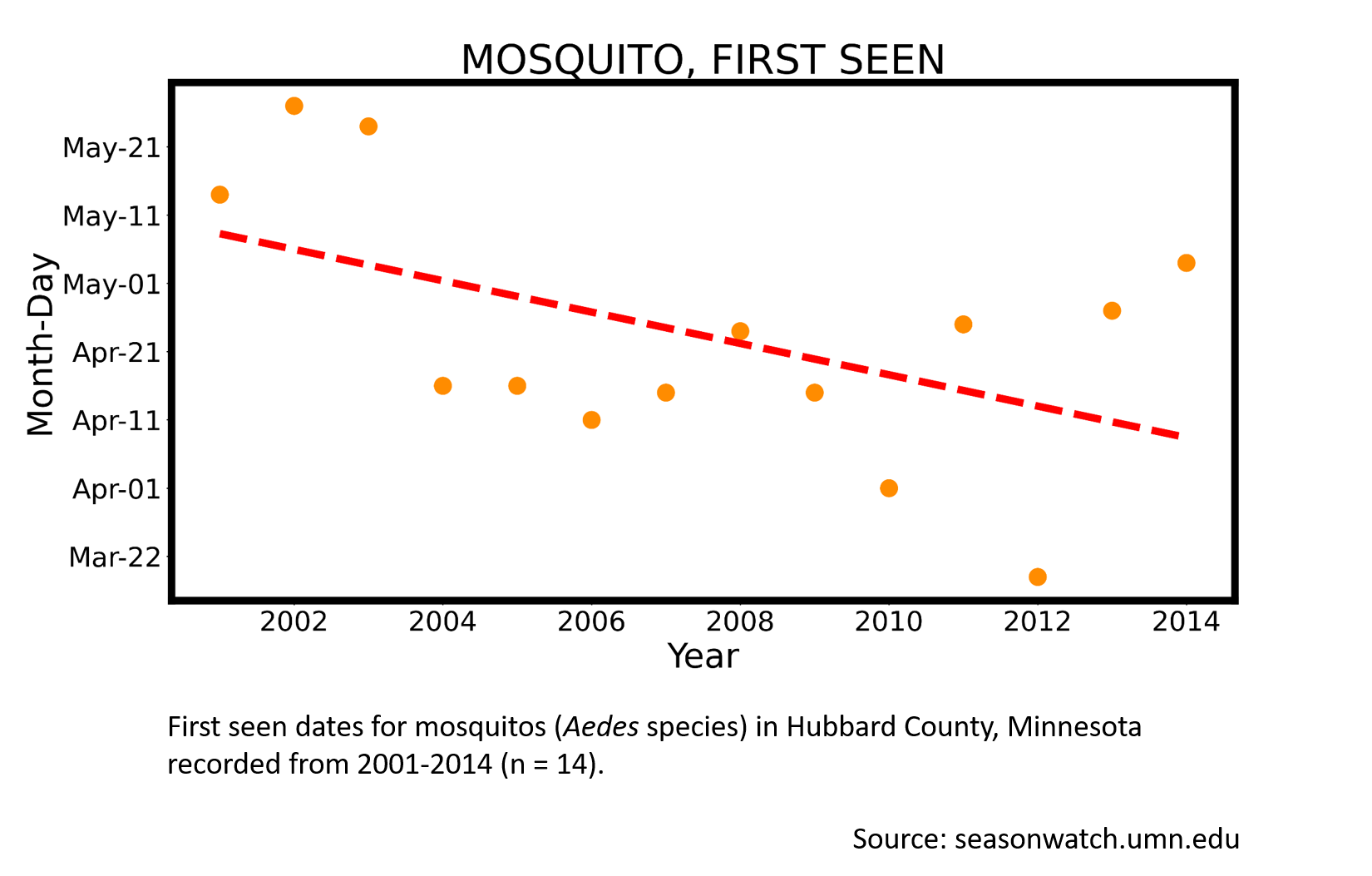
More resources
Keep exploring Season Watch
Keep exploring Season Watch
Co-author: Lynsey Nass, Minnesota Master Naturalist
